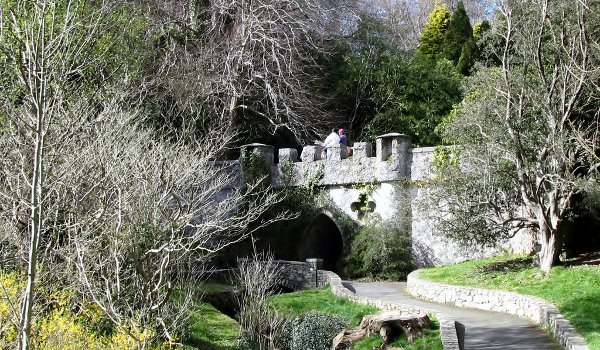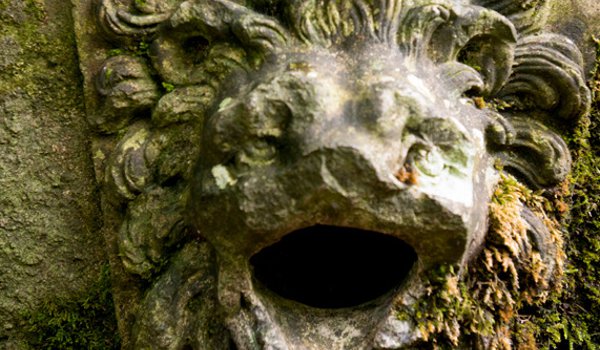WHEN travelling, one of the first places you should look is the visitors’ book.
Whether it’s a museum, art gallery, guest-house or bird-hide, it’s always worth a quick peek in the log book. It’s a sort of analogue Trip Advisor — you can see what previous visitors thought about the place, what they didn’t like, what they might have spotted.
Particularly in former Eastern Bloc countries, such an exercise can provide real insight, as well as being a bit of a hoot. I’ve seen whole pages of visitors’ books filled in by incensed visitors, upset by the version of history which has been portrayed among the exhibitions.
This allows a certain doubt as to the veracity of facts to creep in — and very much encourages you to make your own entry, even if you know little about the history of the place.
But mostly the entries in museum guest books, or bird-hide log books, are good-humoured, sometimes helpful, and often entertaining.
I stayed at a loch side cottage on the shores of Loch Ness recently. The owners were silly enough to provide a spotter’s book. They couldn’t really have expected anything else: in amongst all the black-tailed godwits and red shrikes was a small entry.
“Loch Ness Monster. Definite spot.” Further on down the page, just after an entry confirmed a white throated diver was at large, Shergar had also been spotted.
 Parts of Game of Thrones were filmed in Tollymore Country Park
Parts of Game of Thrones were filmed in Tollymore Country ParkThe next day was no less fruitful. At 11am the spotter had seen Lord Lucan skulking in the garden behind a tree.
My Loch Ness spotter could have had a ball in Co. Down. The logbook at the Tollymore Forest Park visitors’ centre could be equally impressive.
Now, this is an area of avian A-listers, so entries that include nuthatches, red grouse, dipper, snow bunting, Irish jay — even the odd ring ousel — are par for the course.
But in amongst the entries of Carolina wood duck (a pair, by the lake) and a grey heron heading upriver our Loch Ness eagle-eyed scout might have added “Owl and a pussycat” (Edward Lear was a regular visitor here).
Underneath their pea-green boat we might have had a “Professor Digory Kirke” (the owner of the Wardrobe in The Chronicles of Narnia — CS Lewis, a Belfast man was likewise a frequenter of the forest).
And if you’ve been keeping up with your popular culture you’ll understand why all the Lannisters could have been spotted in Tollymore car park.
But this time the sighting might be more accurate. The Game of Thrones ruling family more than likely did visit here — the HBO blockbuster was filmed extensively in the North of Ireland, with Tollymore Forest playing a starring role.

It’s no wonder that this dramatic, at times ethereal, forest was chosen as the setting for a series whose remit runs from mediaeval regicide to the slaying of dragons.
When the sun splits the almost impossibly blue skies above Daenerys Targaryen, and the azure sea sparkles like gemstones, well to be fair, that’s probably the part that was filmed in Morocco.
But when an atmospheric forest scene is needed, a romantic glade, a swift-flowing salmon river, or a tree so gnarled that you swear it had to be sculpted, then step forward Tollymore. This is an Area of Outstanding Natural Beauty.
It’s a part of Ireland with many, you won’t be surprised to learn. They’ve been specialising in them hereabouts since the end of the last Ice Age.
But Tollymore was one of the first to be granted the special status. It’s not difficult to see why. From the edge of the arboretum, an astounding view of the Mountains of Mourne leads the eye to Dundrum Bay and on towards the Isle of Man.
This could well be the view that inspired Percy French to write, “...where the Mountains of Mourne sweep down to the sea,” later recorded by Don McLean, and almost everybody else.
From this viewpoint you can also glimpse the Horn Bridge straddling the Azalea Walk which leads down into the forest. With its tiny turrets, crenellations and shamrock-shaped embrasures, the bridge does an uncanny impersonation of an overgrown toy castle.
 Tollymore's lion that may have inspired CS Lewis
Tollymore's lion that may have inspired CS LewisLewis, you can imagine, gazed down at this fantastic structure, set against a stunning background of exotic trees and towering mountains, and paused for thought. He decided against writing another song about mountains, the sad lot of the emigrant, lost love.
Because his attention would have been drawn to a small, classical fountain (Regency era, fact fans) set into the wall. On it is an almost life-sized head of a stone lion, through which water spouts. This is, according to local legend, Aslan.
Poet Edward Lear also rated these views. “Full of beautiful ruins and bridges and trees and hills and mills and lawns and laurels,” he said, with thoughts of owls and pussycats running wild in his imagination.
To get to the Mourne Mountains you simply head up the Shimna River, which begins just below this viewpoint.
The Shimna eventually meets the Spinkwee River at the Meeting of the Waters, and soon dramatic views of the Pot of Legawherry in the Mournes can be glimpsed.
You can’t help feeling that the sheer poetry of local names hereabouts must have inspired Lewis. It’s not too far a step from the likes of Carrowmurwaghnemucklagh, or the Castles of Comedagh, or the Pot of Pulgarve, to the Fords of Beruna, or Cair Paravel, the royal castle of Narnia.
Beyond the Horn Bridge stood the oak grove which supplied wood for the main staircase of the Titanic.
This will have resonated with CS — he would later pay tribute to the city’s shipbuilding heritage in the poem Of Ships, writing of his return to Belfast by boat and hearing the familiar noise of the Harland and Wolff shipyard.
But soon the open mountain appears. The view is simply one of the best in these islands.
As CS Lewis said of the area in his essay On Stories: “I yearn to see County Down in the snow, one almost expects to see a march of dwarfs dashing past. How I long to break into a world where such things were true.”
Well, all us exiles know how he feels, and will heartily second one of the world’s great writers who drew his inspiration from this beautiful spectacular, and at times strange, part of Ireland.

